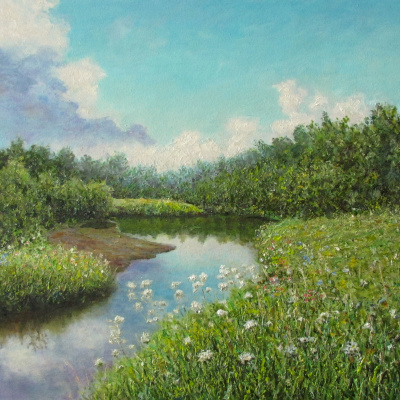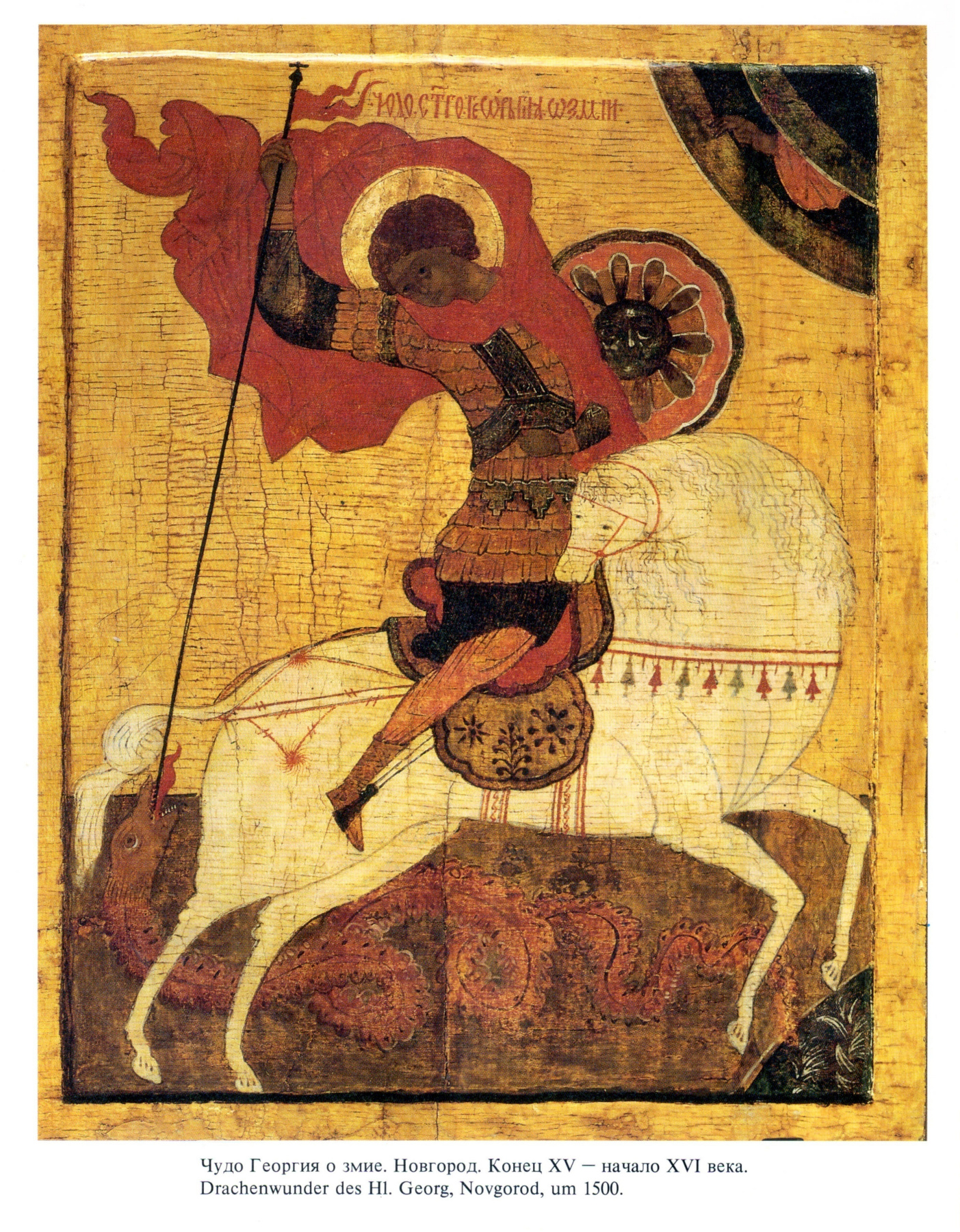

Painting horses at full tilt!
For the inhabitants of Central Europe, the images of wild animals (horses, bears, bulls) as objects of hunting had a magical meaning. This is evidenced by the drawings created 15−20 thousand years ago, found in deep caves (Niaux in The Midi-Pyrénées, Vallon-Pont-d'Arc, Lascaux in France, Tito Bustillo in Spain).

In the Renaissance, the biblical story about the Horsemen of the Apocalypse, in which the four coat colours of horses have a special meaning, became of particular significance. One of the most popular illustrations on this subject was created by Albrecht Dürer. A menacing pathos creeps from his woodcut The Four Horsemen of the Apocalypse. Death, Famine, Pestilence and War are furiously roaming the land and destroying everything in their way.
A royal privilege!
The tradition of painting the so-called "Equestrian portraits" has deep roots in Europe, dating back to the times of the Roman Empire . We can say a lot about horses on such canvases being full participants in the subject; personalities, with their own strength, rage, and nobility, emphasizing and accentuating the characteristic of a person depicted in the portrait. Any wealthy person could commission an artist to create a portrait, but fortune alone wasn’t enough to have an equestrian portrait painted: it was also necessary to have a very notable origin.Equestrian portraits of the royalty were often created by Anthony van Dyck, Diego Velázquez and others.
However, the genre of equestrian portrait was not popular in Russia in the 18th century. In 1743, Georg Christoph Grooth created his Equestrian Portrait of the Empress Elizabeth Petrovna with a Little Negro Footboy. Elizabeth Petrovna sits on a horse mannishly, with a navy seen in the bay… And finally, a little footboy, ready to bow down at her feet and a magnificent, incredibly expensive Spanish horse.
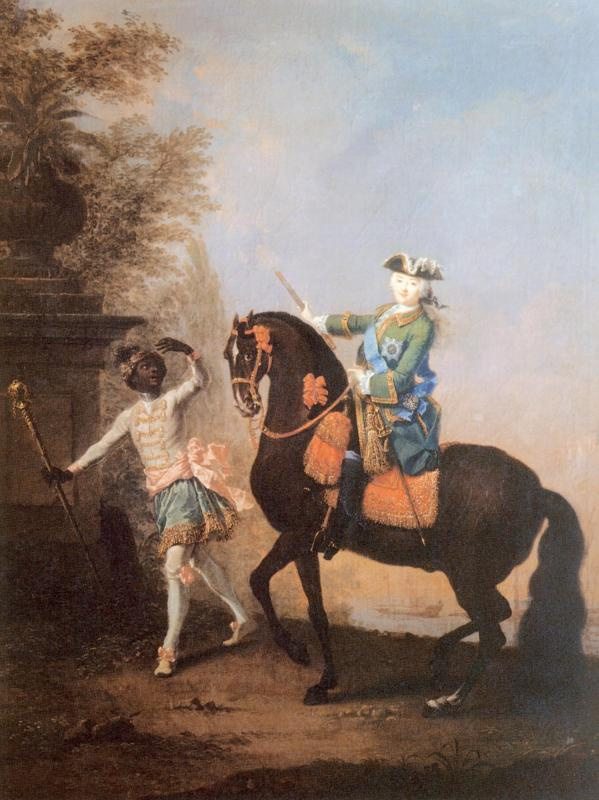
The viewers see not just the reigning person, but the empress of the powerful state, the autocratrix. It should be noted that it is a ceremonial portrait, designed to function as a kind of "propaganda poster." At the time of the painting’s creation, Elizabeth had been ruling for only two years. The artist’s task was to maximally glorify the empress, and the genre of the equestrian portrait suited it best.
The triumph of perfection and freedom of the spirit
A horse has always been an indicator of its owner’s wealth and power. This animal is a hero of military battles and sport competitions. The image of a horse on canvas is intended to tell the viewer about the class status, occupation, even the success of the portrayed person, and sometimes it could be… an attribute of fashion. As people probably like to quote Heine in such cases: "Different century — different horses…"In the era of romanticism, this graceful freedom-loving creature was popular among painters, and the horse for them was part of a wild, free nature. European artists of the 18th-19th centuries created a lot of memorable images of trotters.
English painter George Stubbs (1724−1806) was one of the first artists who devoted his art to animals, especially racehorses, and became the founder of the "hippos" (from Greek — horse) genre. In the middle of the 18th century, equestrian sport began to flourish in England and there appeared numerous orders from horse owners for images of their favourites. Perhaps no artist spent so much time carefully studying the anatomy of these animals, as Stubbs did. He created numerous detailed sketches, painted portraits of horses-champions and mares with their foals.

The most famous of such portraits is that of the stallion Whistlejacket, which even attacked Stubbs during a session. The horse is depicted rearing up, which symbolizes hardly tamed ferocity, that can be controlled neither by the rider nor by the gag-bit. The animalist also wanted to convey a sense of perfect admiration for nature, inspiring awe.
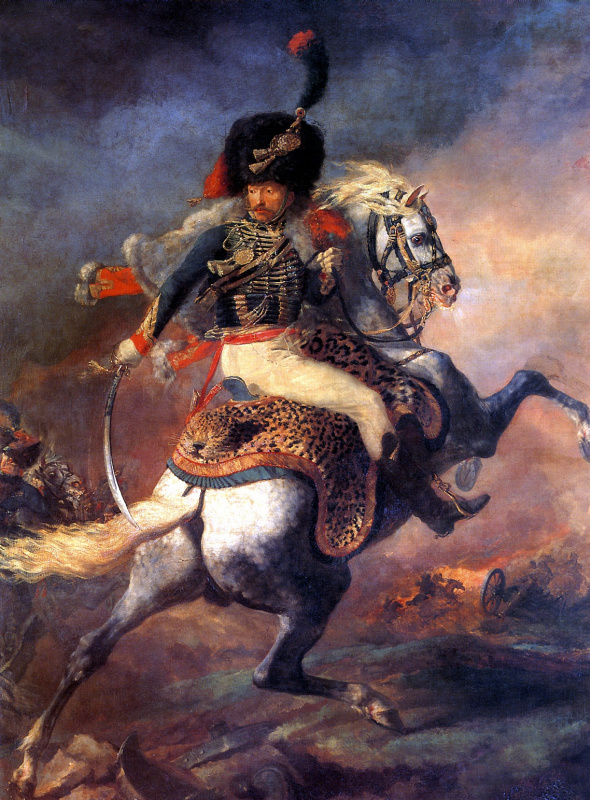
French painter and graphic artist Théodore Géricault (1791−1824) also liked to depict horses as realistically and accurately as possible, which is confirmed by such canvases as The Charging Chasseur, or An Officer of the Imperial Horse Guards Charging and Derby at Epsom. The artist was a passionate rider, and this interest was disastrous: an injury caused by a fall from a horse precipitated Géricault's death.
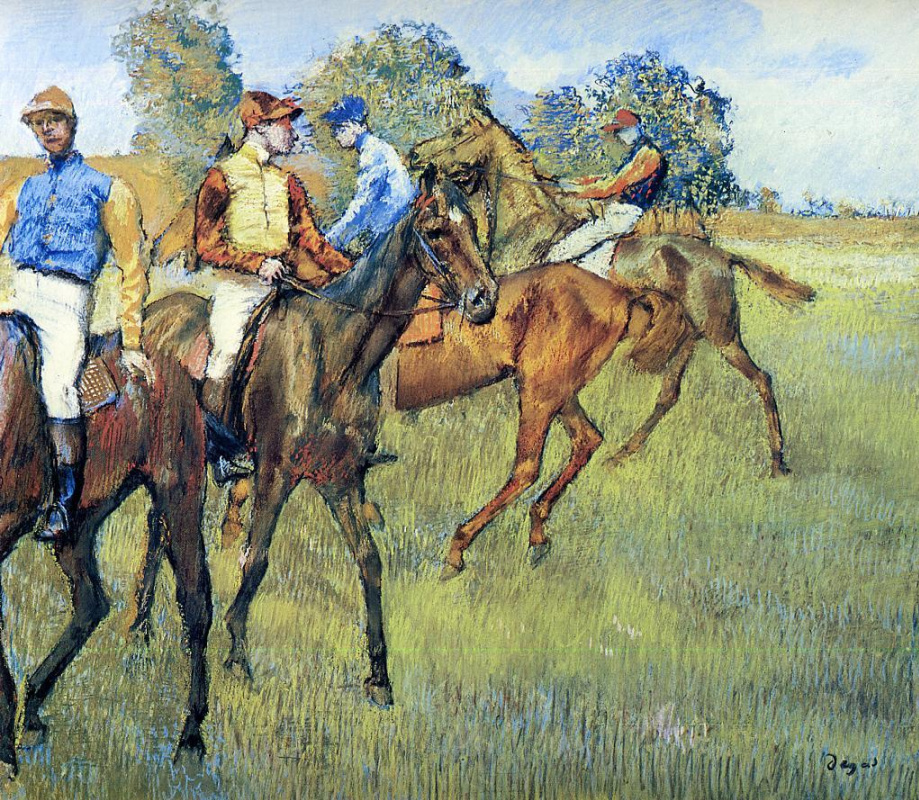
Degas believed that only that which left the most vivid impression was worth being portrayed. That is why his nature is not bound by immobility. The painter created many pencil drawings and sketches, as well as a number of large canvases on the same subject, the most significant of which are The False Start, Race Horses in front of the Stands, Jockeys in the Rain, Before the Race, The Training.

The 3rd-century BC tomb complex of Qin Shihuangdi, the First Emperor of a unified China, contains 600 terracotta sculptures of horses with many chariots and weapons along with 8,099 full-size statues of warriors.
At full gallop – from the legend
The Red Horse in Slavic tradition
Since ancient times, the image of a horse in Russian art has had multiple meanings. In Slavic mythology, this animal was people’s counsellor and saviour, a seer. It was also a "horse-destiny", each step of which symbolized a lot. It is in line with this tradition that Kuzma Petrov-Vodkin (1878−1939) created his painting Bathing of the Red Horse. It is believed that the horse was originally bay (red), and that the master changed its colour, having seen the Novgorod icons and being impressed with their bright colours. Back then, in 1912, the collection and clearing of icons experienced their heyday.The masterpieces of the distant past demonstrate all these precisely symbolic traits of the animals, also showing "qualities in motion" along with grace and harmony of proportions.
Contemporary metaphors
Contemporary Italian artist Maurizio Cattelan (born 1960) interprets the image of a horse in his own way. Being a contemporary provocateur, he usually uses stuffed animals. His installation The Ballad of Trotsky was auctioned at Sotheby’s New York for $2.1 million. The work mourns the death of Trotsky and, more importantly, the collapse of his ideals.
In the words of the author himself, his stuffed horse, suspended from a ceiling, represents the state of uncertainty, for "in a state where it cannot exercise force, it express energy." A strong animal is literally stuck between two worlds in a completely helpless position! Perhaps, the artist believes that this absurd composition symbolizes the contradiction between the purpose and the will of circumstances (a hint at Trotsky’s ideals).

And from the very beginning, the painting caused numerous disputes, in which it was invariably mentioned that such horses didn’t exist. However, the artist claimed that he took over this colour from ancient Russian icon painters: for example, in the icons The Miracle of the Archangel Michael the horse is depicted completely red.

The bronze Quadriga on St. Marks Basilica in Venice is widely regarded as one of the best ancient statues of horses (the 3rd or 4th century B.C.). This is the only surviving example of a multi-figured antique sculpture — cavalry, and indeed the Greek ideal of perfection. The creation of the quadriga is attributed to Lysippos himself. The Greek sculptor, one of the three most famous Greek sculptors of the era, knew horses very well — his sculptures that can be seen today near Parthenon in Athens confirm his talent.
I’ve built myself a monument...
The tradition of depicting horsemen, established in antiquity, continued in Christian art in the images of St. George, Demetrius of Thessaloniki, Maurice, Martinus Turonensis, Theodore Stratelates, Theodore of Amasea.However, in the Middle Ages, the images of horses in art lost their popularity, since many painters and sculptors paid special attention to religious themes in their works. Still, a different, "secular" line, based on the same ancient prototypes, created in the European art the genre of equestrian monuments, the interest to which awoke in the 14th century, in the Renaissance .

A striking example of the equestrian statue of the new time is the monument of the condottieri Erasmo of Narni (1447−1453), better known as "Gattamelata". The sculpture, created by Donatello and located in Padua, was fundamentally different from the previous models. In this work, the master glorified the individual merits of a person not connected with either the class privileges or hereditary nobility (Erasmo was the son of a baker). Donatello introduced the most consistent embodiment of the ideal of a strong man who literally rode high!

Here is one of Leonardo da Vinci's works, The Battle of Anghiari, Paul Rubens’s copy. When creating this masterpiece, Leonardo da Vinci painted more than a hundred drafts and sketches! He carefully studied the animals, observed and sketched their movements for a long time.
Well, the horse is indeed an important figure! And of course, if there is a horse — there is a cavalry.











